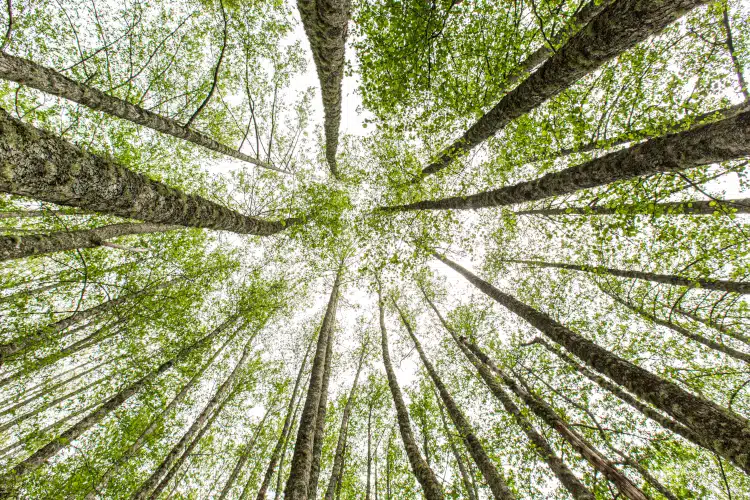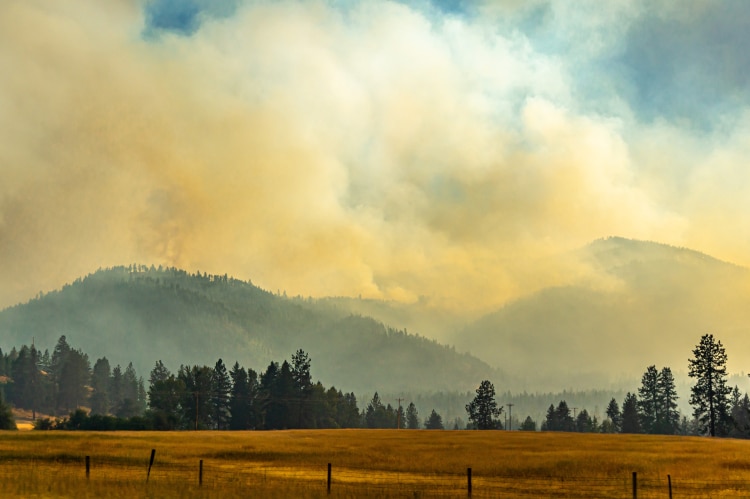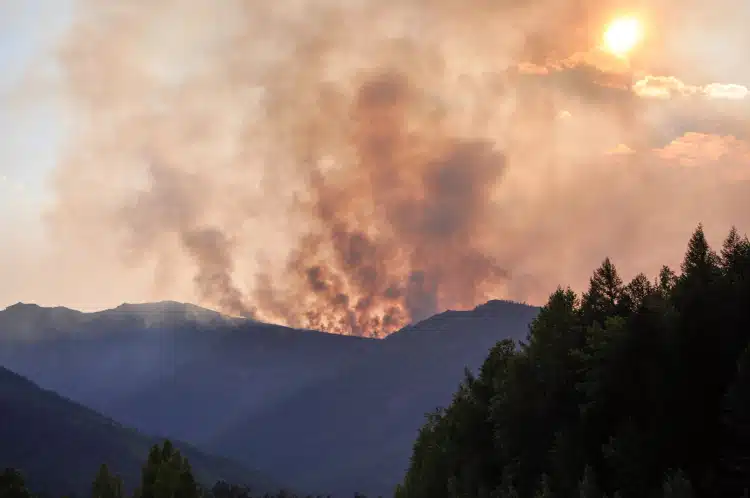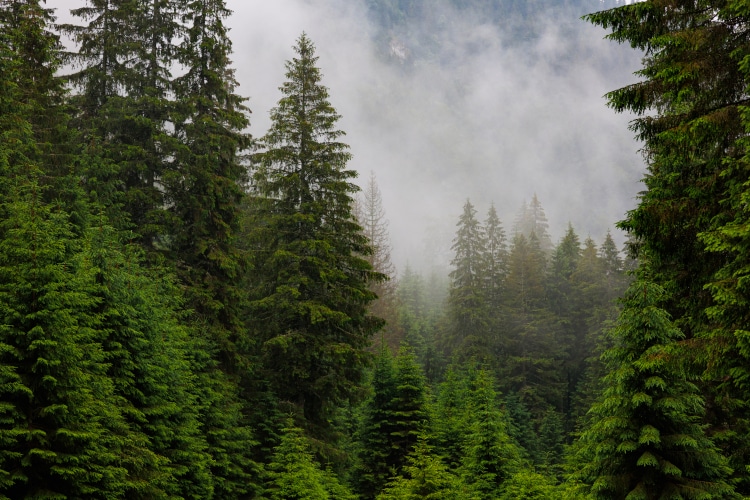
Photo: lightpoet/Depositphotos
The harmful particles and gases in wildfire smoke are just as bad for trees as they are for humans and animals. And while we may stay indoors or wear masks to protect ourselves, trees also have a clever system to withstand the aftermath of forest fires. A study conducted by MJ Riches and Delphine Farmer from Colorado State University found that trees pretty much “hold their breath” to avoid damage from the smoke.
Riches and Farmer explain that plants have stomata, which are pores on the surface of their leaves. While these pores are like a plant’s equivalent to a human mouth, instead of inhaling oxygen and exhaling carbon dioxide like we do, they do the opposite—they inhale carbon dioxide and exhale oxygen. But unlike humans, leaves breathe in and out atmospheric gases at the same time.
While the scientists were originally aiming to study how plants emit the chemicals that make forests smell like a forest, known as volatile organic compounds, a thick smoke came through the field site where they were working in the Rocky Mountains of Colorado. After the first morning of heavy smoke, they measured the leaf-level photosynthesis of Ponderosa pines, but were shocked to find that the tree’s pores were completely shut.
“We also measured the leaves’ emissions of their usual volatile organic compounds and found very low readings,” write the study authors for The Conversation. “This meant that the leaves weren’t ‘breathing’—they weren’t inhaling the carbon dioxide they need to grow and weren’t exhaling the chemicals they usually release.”
Once they noticed this unexpected phenomenon, Riches and Farmer tried to reset a leaf to its normal rhythm. To do so, they altered the leaf’s temperature and humidity, clearing its “airways.” With this, the leaf suddenly improved, restarted photosynthesis and began emitting volatile organic compounds.
“What our months of data told us is that some plants respond to heavy bouts of wildfire smoke by shutting down their exchange with outside air,” the researchers say. “They are effectively holding their breath, but not before they have been exposed to the smoke.”
While this discovery was completely accidental, Riches and Farmer’s findings may help scientists and environmentalists better understand and help nature in the face of increasingly intense wildfire seasons.
“The jury is still out on exactly how long the effects of wildfire smoke last and how repeated smoke events will affect plants—including trees and crops—over the long term,” they share. “With wildfires increasing in severity and frequency due to climate change, forest management policies, and human behavior, it’s important to gain a better understanding of the impact.”
A study conducted by MJ Riches and Delphine Farmer found that trees “hold their breath” to avoid damage from hazardous smoke.

Photo: Wirestock/Depositphotos
After some heavy smoke hit the field they were working at, they measured the leaf-level photosynthesis of Ponderosa pines, but were shocked to find that the tree’s pores were completely shut.

Photo: Tramp-KHV/Depositphotos
Riches and Farmer explain that plants have stomata, which are pores on the surface of their leaves, a plant’s equivalent to a human mouth.

Photo: Alexandrumusuc/Depositphotos
h/t: [The Conversation]
Related Articles:
Woman Plants 4,545 Trees in a Single Day and Over 372,000 Trees Throughout Summer
Japan Gifts the U.S. 250 Cherry Trees for 250th Anniversary of Declaration of Independence
Dreamy Wisteria Trees Transform Japan Into a Blooming Wonderland Every Spring
America’s First Carbon-Positive Hotel Opening in Denver Is Inspired by Colorado’s Native Trees
